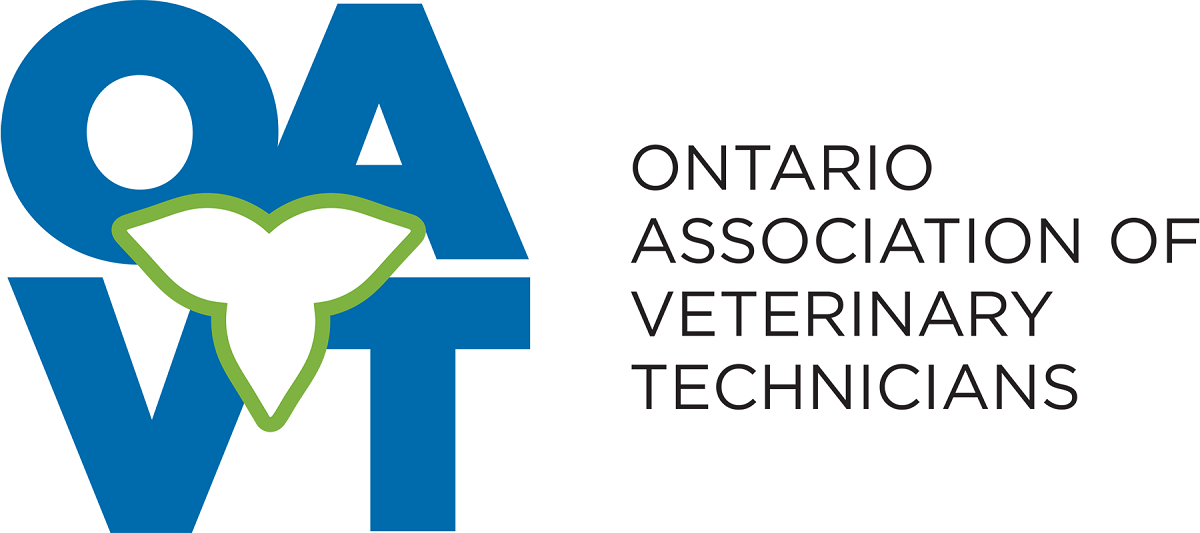ONgoing CE Opportunities
Ongoing CE Opportunities
The postings are categorized and sorted alphabetically for your convenience; they are not displayed in any order of priority or preference by OAVT. New postings are added regularly.
Table of Contents
College Programs/ Certificates/ Diplomas
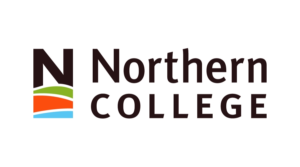
This program will teach students the importance of providing an appropriate environment for a wide range of animals in both short and long term rehabilitation situations from an ecological viewpoint. The program will give students a solid foundation on wildlife rehabilitation knowledge, diagnostic and nursing skills gained through practical experience. Graduates will be able to explore a wide range of career opportunities in both the private and public sectors, including employment in natural resources, zoos, and wildlife parks, avian rehabilitation centers, natural bird sanctuaries, orphanage programs and any small or large animal veterinary clinic that receives injured wild animals. Worth 20 CE credits upon completion of program.

A graduate one-year certificate program for RVTs in response to emerging animal health care needs. Worth 20 CE credits upon completion of program
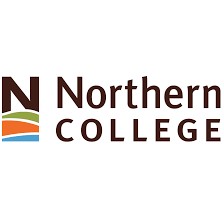
This micro-credential was designed by Dr. Ray Reynan (past President of the Ontario Association of Bovine Practitioners and Canadian Association of Bovine Practitioners) and Wayne Shewfelt (past President of Ontario Association of Bovine Practitioners) and former winner of the prestigious American Association of Bovine Practitioners Dairy Veterinary of the Year Award.
Successful candidates will be able to function independently and confidently as part of a veterinary service delivery team.
These micro-credentials are offered online with farm school assessments in Haileybury, Ontario or other locations. Micro-credentials are an ideal option for achieving badges of completion for professional development that can also be placed in LinkedIn accounts.
MICRO-CREDENTIALS ARE OFFERED AT YOUR OWN PACE, SEMESTER BASED, AND CONTINUOUS INTAKE
Modules include:
Stockmanship
Learn about herd and animal behavior, handle cattle with personal safety,and in a way that minimizes animal stress.
Dairy Industry
This module will introduce the structure of the supply management system for dairy production, including an introduction to how milk checks are calculated and managed by producers.
Life of a Diary Cow
Review the life cycle of a dairy cow from birth to herd removal. Particular focus on the impacts and assessment of the cow environment, from stall design to ventilation.
Udder Health/Milk Quality and Mastitis
Gain techniques to troubleshoot milk quality issues from the collection of farm data, cleanliness, and aseptic samples.
Reproduction/Manipulation of Cycles and Breeding
This unit explores the reproductive physiology of the modern dairy cow, including breeding synchronization protocols, use of computer software in tracking herd reproductive performance, and the role of technicians in both data entry and report preparation for dairy veterinarians.
Nutrition
This module explores shaker boxes, audits, evaluating feed samples, and reading a feed tag.
Transition Cow Management
Learn to use various computer software and monitoring programs in detection of transition cow disorders. Formally capture
herd data such as body condition scoring and BHB sampling to assist in in this capacity.
Dairy Software
Learn to run Dairycomp software. Prepare and interpret reports on milk production, reproduction, and health events.
Dairy Medications
Review basic protocols, reporting requirements, and safety procedures to administer treatments and vaccination programs at a herd level.
Health Management
Learn about common issues encountered in Canadian dairies, and the role of the technician in data collection, treatment, and monitoring for pathogens.
Hoof Health and Lameness
Develop skill in lameness evaluation and recording, as well as assessment of current farm hoof health protocols. Environmental and nutritional contributions will also be discussed.
Cost: $1895
To Register: NCMicro@northern.on.ca
Book a seminar/Lunch & Learn or in-person course
Online Opportunities
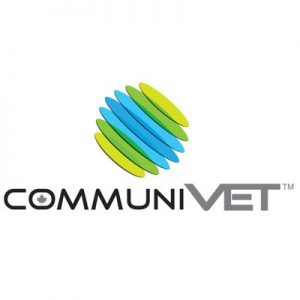
Emerging trends in ticks and tick-borne diseases
The tick population has expanded in recent years, and the diseases they carry have become more prevalent.
During this webcast, Dr. Katie Clow will present an overview of the current status of tick populations in Canada, as well as the data on pathogen risks.
OAVT CE – 1 credit

Nearly 200 veterinary professionals recently responded to a CommuniVET survey to share their opinions and practices related to weight management programs for dogs and cats. This presentation is your chance to review the survey with a panel of three Canadian veterinary experts

Presented by Dr. Kilborn, Dr. Mirkovic and Dr. Moore
Pet parents find it very stressful to deal with the onset of acute GI upsets in their pets; they are seeking a quick resolution, and turn to you and your team to find a solution. Even though antibiotics have their place for treating some gastrointestinal diseases, they also negatively affect the microbiome. For mild, uncomplicated acute GI upsets, all-natural alternatives are available, which have been proven helpful in the resolution of acute GI upsets without causing any harm to the gut microbiome. New tools developed by veterinarian specialists are at your disposal to assist in reducing the workload for managing mild uncomplicated acute GI upsets.
During the webcast, veterinarian specialists with expertise in gastroenterology, infectious diseases and education will share how to engage your entire team in the management of mild, uncomplicated acute GI upsets. This approach is adaptable to all clinics, and offers favourable results for you, your clients and their pets.

This is a learning activity on the topic of euthanasia, with two components:
1. An on-demand webcast, entitled “Euthanasia – Reducing stress while adding value”.
In this webcast, Dr. Mason shares tips to help veterinarians, as well as other members of the in-clinic team, to better assist pet owners in making this most difficult decision. Special attention is given to communication by reconsidering the vocabulary to use and the relevant information to share. She also talks about the logistics related to euthanasia appointments in order to improve the experience for everyone involved, while providing tips on self-care for veterinarians and in-clinic staff.
2. A video snapshot, entitled “Pre-euthanasia sedation – Winning protocols!”
The well-being of their faithful companions during end-of-life care is absolutely paramount for pet owners. In this Scientific Snapshot, Dr. Céline Leheurteux, creator of Euthabag®, examines why sedation should be part of the euthanasia process. Among other things, she discusses practice standards, the two-injection technique and the benefits of sedation. She also shares magic protocols to make the experience as pleasant as possible.

With the changes in practice standards that have taken place recently, many veterinary practices have had to acquire a dental x‐ray system. Thus now, they are obtaining dental x‐rays, but what are they looking at exactly? This presentation should help to clarify dental and oral anatomy as seen in shades of grey and in 2 dimensions. The presentation will cover some of the most common pathologies encountered in veterinary dentistry.
Link to watch on-demand version: https://www.communivet.com/en/ca/education/webcasts/dental-x-rays
Available as of February 23, 2022

Fear Free is an organization whose mission is to reduce or eliminate Fear, Anxiety and Stress (FAS) in pets by inspiring and educating those who care for them. During this one‐hour webcast presentation, Dr. Jonathan Bloom will talk about what Fear FreeSM is, why it’s important, as well as the negative impact that FAS has on pets and their owners. He reviews the many signs of FAS and how to address them. He will also discuss the most important and impactful changes in veterinary medicine in terms of managing FAS, while elevating the level of healthcare provided by veterinary teams to ensure the well‐being of all parties involved.
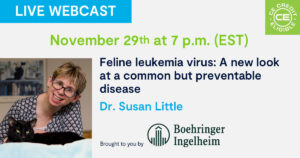
Presented by Dr. Susan Little
Feline leukemia (FeLV) is an important cause of illness and death in cats worldwide. While veterinarians have made much progress in reducing FeLV infections and illness in many parts of Canada, there is still much work to be done. During this webcast, Dr. Susan Little will present up-to-date information on the prevalence and the importance of prevention with vaccination, especially for kittens. She will also share new insight into the behaviour of FeLV infection and how this influences testing.

Field anesthesia in horses: tips, tricks & pitfalls
During this webcast, Dr. Daniel Pang and Dr. Shannon Lockhart will review key concepts and options for
equine field anesthesia, including:
• common drug choices for field anesthesia, with a discussion of their advantages and disadvantages;
• differences between midazolam and diazepam, and their impact when included in the anesthetic protocol;
• options for extending general anesthesia under field conditions; and,
• anesthetic monitoring: assessing depth of anesthesia and monitoring equipment.
OAVT CE Credit: 1

This is a 60-minute webinar.
Link to watch on-demand version: https://www.communivet.com/en/ca/education/webcasts/fight-back-against-periodontal-disease
Understanding periodontal disease is an important first step in controlling the disease and the impact it has on patients. This webinar will retrace the pathogeny of PD, with a focus on how to convey to clients the importance of the disease and its prevention. Home care will be thoroughly discussed.

This is a 60-minute webinar. It will be available for on-demand viewing as of July 2, 2021. The link to register to this webinar is: https://www.communivet.com/en/ca/education/webinars
Objectives:
To gain an understanding of:
- Mechanisms of appetite in healthy cats
- External factors that can increase food intake in sick cats
- Medical options for appetite enhancement
Summary: How do we get a sick cat to eat? Surely, this is one of the greatest challenges in feline practice. We will discuss factors that generate appetite in cats and a multimodal approach to treating inappetent cats. Dietary and environmental modifications to increase food intake will be covered, as well as pharmacological options.


This webinar is designed to provide veterinary professionals with a better understanding of the causes, presentations, and treatment options in regard to managing acute to chronic GI upset in dogs and cats. Learn why feeding through GI upset is now recommended over the traditional recommendation of fasting, and the move away from antibiotics as treatment for GI upset. Dr. Ian Sandler introduces the products in Grey Wolf’s +GI portfolio and outlines how they are used in each stage of GI upset, and how they can be packaged together as a GI Emergency Kit to reduce unnecessary visits to the clinic and keep everyone safe. Dr. Sandler explains how the +GI products are effective in maximizing clinical outcomes and getting patients back on their paws, sooner.
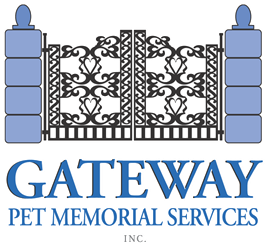
In this course, Rebecca Rose, CVT, Certified Career Coach, discusses the many stages of grieving while providing practical advice to help guide your clients through their grief.

Harnessing the power of fibre to manage diarrhea in dogs and cat
On-demand webcast available starting September 30, 2022.
Fibre supplementation can be a powerful tool—when used correctly. Join Dr. Valerie Parker in this webinar as she discusses how to quantify fibre and shares different situations in which fibre supplementation may prove useful in controlling stool quality.
https://www.communivet.com/en/ca/education/webcasts/power-of-fibre-to-manage-diarrhea
OAVT – 1 CE credit

Help! My puppy or kitten is scratching
There is a common misconception that food allergies cause skin problems in pets. However, these types of allergies are actually quite rare. In fact, environmental allergies are the most common cause of allergies in pets.
During this webcast, dermatology specialist Dr. Gabrielle Brosseau will discuss food and environmental allergies, as well as parasitic, viral, bacterial, fungal, inflammatory, and autoimmune dermatoses, which especially affect puppies and kittens.
Presented by Gabrielle Brosseau, DVM, IPSAV, Dipl. ACVD
This webcast will be presented in French with simultaneous interpretation in English, so the PPT presentation is in French.
OAVT – 1 CE credit

We all love senior pets! Graying bodies, and sweet expressions of long term devotion, and experiences. As animals, including humans, age, their energy requirements along with how effective the body utilizes that energy changes. Looking beyond the gray hairs, what do we need to consider when determining an appropriate diet for senior pets? What nutrients should the calories come from? When looking at a bag of food, how can I determine if it’s meant for a senior pet? Once we understand some of the ins and outs of senior nutrition, how do we instill the value of senior nutrition in our pet parents? This interactive session will use some real life examples to help guide you through the nutrition journey with a pet and the pet parent.
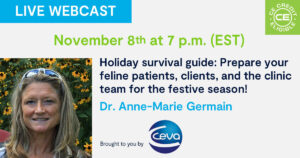
Presented by Dr. Anne-Marie Germain
The holiday season can be stressful for cats, pet owners, and the entire veterinary team. Last-minute “urgent” requests from anxious pet owners for medication, food, or in need of an appointment for their sick cats, vomiting, urinating outside the litter box, or even worse, with a possible urinary obstruction. Sounds familiar?
During this webcast, Dr. Anne-Marie Germain will share some helpful ideas, practical clinic tools, and sound bites designed to help cat owners better understand cats, help them optimize the environment to decrease stressors for their feline friends, avoid some mishaps, and be more prepared to help everyone enjoy a festive holiday season.

Knowledge and skill of the veterinary professional are instrumental to the successful outcome of any dental procedure. A third and often overlooked contributing factor to a successful procedure is the instrumentation and equipment used. Not only is the appropriate selection and correct use of dental instrumentation and equipment important, the care and maintenance they receive greatly impacts their effectiveness. Well maintained, sharp, dental hand instruments enable the veterinary professional to complete the procedure at hand more efficiently, with less trauma to the patient. This video will address sharpening materials needed, differences between scalers and curettes, how to sharpen luxators, elevators, root tip picks, periosteal elevators, scalers and curettes, as well as how to do minor repairs on damaged and/or misshapen instruments. This video is suitable for veterinarians, registered veterinary technicians and other practice staff.
The tutorial will be available here: https://www.communivet.com/en/ca/toolbox/2022/how-to-best-sharpen-your-dental-instruments.

How to incorporate a complete dental examination and diagnostic dental radiographs into your practice
During this webcast, Dr. Leah Limone will review how to complete a thorough oral/dental examination. She will also explore normal vs abnormal anatomy, and go over radiographic views to take to help diagnose areas of dental disease.
To register: https://www.communivet.com/
OAVT Credits – 1 CEC

This is a 60-minute webinar. To watch: https://www.communivet.com/en/ca/education/webcasts/incorporating-benzodiazepines-into-your-anesthesia-practice
During this webcast, Dr. Jessica Pang will discuss the challenges related to deciding when and how to use benzodiazepines in daily practice. She will also provide guidelines on the following aspects:
- how to take advantage of the physiologic effects of midazolam and diazepam; and,
- how to incorporate them into sedation and anesthesia protocols for small animal patients.

https://www.communivet.com/en/ca/education/webcasts/individualized-nutrition
Presented by Dr. Erico Ribeiro
Individualized nutrition
• Review of the essential factors for providing individualized nutrition for healthy dogs and cats and during times of disease
• Demonstration of examples of cases and calculations
• Discussion on when supplementation is required and how to dose correctly
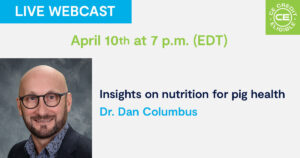
Presented by Dr. Dan Columbus
Join us as we discuss dietary protein and fibre content, and the use of functional amino acids.
As we strive to decrease the use of antibiotics in pork production, prioritizing the functional aspects of nutrition is increasingly important to sustain the health and growth of pigs.
During this webcast, Dr. Dan Columbus will present information on the impact of macronutrient and micronutrient content in diets on the immune status and welfare of pigs.

This presentation will help you understand the intestinal microbiota in health and disease (with focus on acute diarrhea and chronic intestinal inflammation), the methods for evaluation of the intestinal microbiota, and how therapeutic manipulation (antibiotics, probiotics, diet, fecal microbiota transplantation) can help in the management of chronic enteropathies. Presented by Jan Suchodolski, DrMedVet, PhD, AGAF, Dipl. ACVM

It’s not just “chonk”! Taking obesity and overweightness seriously in cats and dogs
- Review of the broad impacts of obesity and overweightness on cats and dogs as they age
- Review of current research on obesity communication, with an emphasis on the challenges we must overcome as veterinary teams
- Discussion of effective strategies to support conversations with pet owners, including open‐ended questions and nutritional history forms
OAVT CE Credit – 1

Learn how to create a business culture that fosters a high level of employee engagement
As you know, we have a severe shortage of veterinarians and support staff in our profession. While we tend to focus on attracting people to the veterinary profession, the bigger issue is that we have a retention problem. Disengaged employees are a cause of low morale, productivity and profitability; and increased employee turnover, burnout and client complaints. One key to retaining employees is to create a business culture that has a high level of employee engagement. A standardized employee engagement survey can provide a business with key insights on employee satisfaction which can then be the basis for organizational changes that can lead to increased practice productivity, profitability and client loyalty… with happier and more motivated employees.
The presentation is being delivered on two dates – February 21st from 8 a.m.-9:15 a.m., and February 28th from 10 a.m.-11:15 a.m.
Presented by Dr. Mike Pownall
OAVT CE – 1.25 credits
